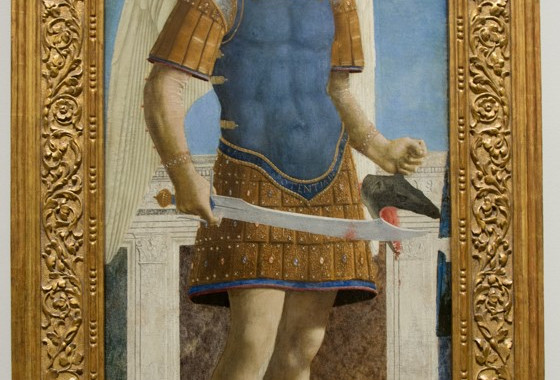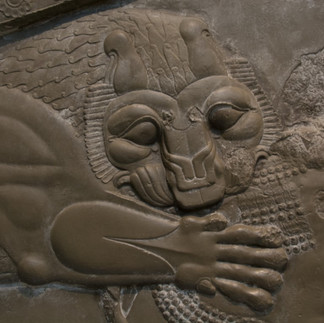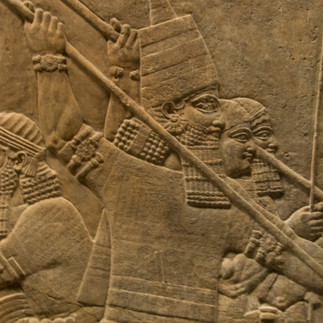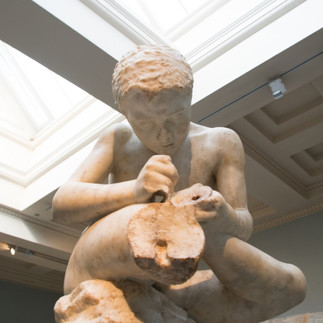Visiting London. A quick weekend in the charming old lady of England. National Gallery, British Museum, St. Martin in the Fields.
- The Introvert Traveler
- Dec 30, 2021
- 10 min read
Updated: Apr 19

Country: Brexit
City: London
Time of visit: November 2021
Duration of visit: a weekend
My rating: 10/10

By the end of November this year I had planned to do something I had wanted for some time, having always postponed it: see the foliage on the Tuscan Apennines. Airbnb reservation: check. New trekking shoes: check. Emptied SD cards: check. Everything was ready, except the weather. For the planned weekend, in the Casentinesi Forests National Park, one of the best places in the world to see the foliage, tons of showers were expected. I waited until the last moment hoping that the weather would change, but nothing ... So at the last moment, reluctantly, I had to cancel and resign myself to spending a rainy weekend at home. Then, while I was listlessly making a job call, browsing the internet, I found two plane tickets to London for 20 euros.
Ready, set, go and here is the report of two days in London.
First of all, I must say that London is a city that I know quite well; adding the time I spent there to study and the time spent on various occasions for tourism, it is probably the city where I spent the most time after my hometown. Anyway, London has always something new to offer and it's been maybe 20 years since my last visit.
The departure is not smooth: 3 people are not compliant with the Covid documentation required by the most recent Italian decree; the flight crew refuses to let them get on the plane and they scream like madmen bringing up the most imaginative conspiracy theories. A hostess, with ill-concealed perfidy, says "back in the days there were travel agencies, today you want to be all do-it-yourself tourists and these are the results". She was not completely wrong; the new economy has opened up many opportunities for those who know how to play the game, but it takes just a second to be swallowed up. I think to myself and hope to be in order and not to end up in the miserable group of outcasts, but fortunately we manage to get on the plane.
Before leaving I recommend purchasing the Visitor Oyster Card. On the Internet it is full of sites that do accurate calculations and convenience analyzes (compared with the Oyster Card); personally I have not been to subtilize for a few euros; the Oyster Card allows you to land in London and be immediately free to move on the entire transport network; a weekend passes quickly and the Visitor Oyster Card saves valuable time.
On landing, however, we lost a lot of time for the Covid Test (God damn bats, coronaviruses and everything that comes with it); it is the first time in my life that I have landed at London Stansted, I thought that, as the third airport in London, the dimensions would be smaller but it is still a huge airport and the controls are very strict. Heck, I went through airport checks carrying everything from cocaine to human organs to nuclear weapons, no one had ever bothered me so much for a backpack of photographic equipment! Finally, having passed all the checks, we head towards the center of London to dedicate a morning to walking aimlessly. Incredibly we gave up an Italian weekend due to the rain to find a lovely time in London... oddities of the crazy weather.

Rather randomly we end up in Connaught street, a decidedly high end area of London; along the road you can see nothing but supercars parked and I confess that I am beginning to feel a little uneasy for the display of so many immeasurable wealth. We stop for breakfast in a lovely and excellent café (Abasto) specializing in Argentine cuisine where we also bought some empanadas for lunch.
After breakfast we continued in the direction of Covent Garden passing through Regent Street; London showed itself to us in all its glamor.
After a few hours, we decide to spend the afternoon at the National Gallery. I have visited the National Gallery before but every time I am amazed. It is not only the size of the museum, for which one day is absolutely not enough, but what is amazing is the average quality of the works. Having little time available, we substantially limited our visit to the Renaissance painting wing; with very rare exceptions, every single painting on display is an absolute masterpiece and what is surprising is also the excellent quality of conservation of the works. In many great museums it happens to see works, perhaps important ones, which would require some restoration, or chosen among the minor works of some great author. London flexes its muscles as well from this point of view: the Battle of San Romano by Paolo Uccello, the Baptism of Christ by Piero della Francesca, Leonardo, Pisanello, Botticelli, Bronzino, Van Eyck, Carlo Crivelli, Cosmè Tura, Mantegna, Holbein ... enough to lose your mind.
After the quick and splendid visit to the National Gallery, our soirée awaited us. In fact, the visit to the National Gallery was also motivated by the proximity to St. Martin in the Fields, where we had booked two tickets for the evening concert by candlelight. So we refreshed ourselves in the crypt of St. Martin with a hot tea waiting for the concert. If you are a lover of classical music, you will know that the name of St. Martin in the Fields is an authority on the subject; many of the most important recordings are performed by the Academy of St. Martin, which is one of the most prestigious chamber music orchestras in the world. The orchestra was founded by Neville Mariner and currently the artistic director is none other than Joshua Bell.
Among the merits of the Academy of St. Martin is the fact that it is an extremely down to earth institution; concerts are held in St. Martin's Church in Trafalgar Square; ticket prices are relatively modest (32 pounds), but above all a particular dress code is not required, so any Introvert Traveler can safely land in London and go to the concert without wearing a tuxedo.

Unfortunately I must say that, despite my high expectations, the concert was a bit disappointing; the program (Vivaldi's Four Seasons... again...) was the most predictable, the acoustics inside the church are just average, the candlelit exhibition is more of a commercial gimmick, but above all the visibility is very bad; I think that the added value of seeing a live classical music concert is the possibility of seeing with your own eyes the performance by the musicians, matching the manual skills with sounds, following the gazes of the musicians who chase each other in the entries; if all this fails because you have to look for a glimpse between the heads of other spectators to see something, then it is better to listen to a record with headphones.
Anyway, I should have been home to put up with a rainy weekend and instead I'm in Trafalgar Square listening to Vivaldi, it could be worse ....
The next day we dedicated it to another London institution: the British Museum. Unlike the National Gallery, which I had already explored extensively, I had only been once to the British Museum in the past for a cursory visit, when I was young, stupid and indifferent to beauty.
This is the part where I copy what I have already written about the National Gallery: the British Museum is a stunning museum, what amazes is not only the quantity but also the quality of the works on display; it happens to wander through the corridors and to find works that in any other museum would be the main attraction, placed there almost as if they were knick-knacks, such is the average quality of the works on display.

Before dedicating some in-depth comment to the highlights, I will focus on the main areas. The Egyptian wing is obviously one of the most renowned collections; the Rosetta stone is an icon almost as much as Leonardo's Mona Lisa and just as in the Louvre you have to elbow to see the Mona Lisa, at the British Museum, all eyes are on the superstar of Egyptian archeology. But what is surprising is the quality of the workmanship of many not particularly well-known works, which leads us to reflect on what was the level reached by the artists of such a remote civilization in time.
What took me quite by surprise is the Assyrian section. Raise your hand if you have ever thought of Assyrian culture as a peak in the history of world art ... yet the bas-reliefs of the Nineveh palace are among the greatest surprises I have had in recent years in visiting a museum. The richness and variety of the story that unfolds along the walls are as exciting as watching an action movie and the plastic and chiaroscuro effects of the reliefs are astonishing, as is the stylization of the subjects.
I fly over the sections of Greek and Roman art, which obviously have a number of exceptional works (leaving aside the fact that the room of the metopes of the Parthenon was closed indefinitely for maintenance work ...), just posting a few photos and I come to to illustrate in a little more detail two astounding works which are, I believe, among the greatest treasures of the British Museum.
The first work, in my personal order of importance, is the Portland vase, a Roman cameo glass vase, which is dated to between AD 1 and AD 25. Personally, I do not hesitate to define the Portland vase one of the most extraordinary works of art ever made; I am not referring only to the technical skill of creating a work of such finesse with a material such as glass, but also to the elegance and perfection of the subjects, to the taste, to the charm of the subject, which many interpreters over the centuries have tried to interpret without success (is it the Emperor Augustus? Or Perseus?).
Every single detail of the vase is simply perfect: the transparencies of the veil on the arm of the seated female figure, the austere beauty of the same figure with the locks of hair falling on the neck and the perfect rendering of the twist of the body, the sense of perspective depth of the architectural elements, the massive musculature of the young man, reminiscent of illustrious examples such as the Farnese Hercules or the Belvedere Torso, the majesty of the seated man, which not by chance made someone think of the emperor Augustus, the michelangeloesque perfection of the bearded man and I will not dwell further.
The vase was made by immersing a first layer of still hot blue glass in a second white layer; the vase was subsequently modeled as would be done for a common glass vase; later the white layer was finely chiseled; I seem to remember reading somewhere an estimate of two years of work...
Over the centuries, numerous attempts have been made to reproduce the vase, but essentially without success. Josiah Wedgwood made ceramic copies which, although of excellent workmanship, do not come close in any way to the original in glass. Glass experts have tried to reproduce the vase without in any way approaching the original, which is also perfect from the point of view of the quality of the glass, practically free of air bubbles.

A second masterpiece is the so-called Gayer-Anderson cat, a bronze sculpture of a life-sized cat made in Egypt, presumably between the seventh and fourth centuries BC. Also in this case it is a work that combines a superfine construction technique with great aesthetic taste.
From an aesthetic point of view, the work perfectly blends naturalistic realism with Egyptian symbolism; on the one hand, in fact, no one will escape the likelihood of the statue; the cat seems almost ready to shoot, with the spine slightly flexed, the weight imperceptibly loaded on the front legs and the darting shoulder blades; the expression on his face is almost human.

The naturalism of the work is evident in the asymmetry of the statue, which is particularly noticeable from the rear view. Despite the naturalistic realism, the work adheres perfectly to Egyptian symbolism, replicating the profile of many cats seen in the wall inscriptions of Egyptian temples.
The realism of the work must not lead one to take its quality for granted; on a technical level it is an extraordinary work, the quality of which emerges by comparing it with other bronze works of the same period such as the bronze cat from Abusir and also kept in the British Museum.
The Gayer-Anderson's cat has an indescribable charm that catches the eye as soon as you enter the room that houses it in the British Museum.

One last comment; just behind the Portland vase is this bust. For years, visiting museums and observing the statues with missing noses and genitals, I thought that often the statues had damaged faces and genitals because they were the most exposed parts. Then I read this book by Catherine Nixey and I discovered that all ancient artifacts that have arrived more or less intact up to us, as the Catholic world expanded, have undergone censorship. The destruction of the face and genitals of the effigies was the first scar that the Christian invaders perpetuated when they invaded a city or a palace. We should never forget, when we talk about fanaticism, that not too long ago we were the fanatics.

After our visit to the British Museum, our weekend was coming to an end, but there was still time for a drink in Southbank. Southbank is an area of markets and clubs in South London, near the London Eye; it is a young and noisy area, where people come to party and have fun (and where I discovered the existence of a museum of the British Film Institute which I intend to come back to visit), ideal for a farewell drink before leaving.
Compared with the London that I used to know as a student I have found a much better city; perception certainly changes with age, but what once seemed to me a stuffed dinosaur is now a younger, more modern, more vital, cleaner city with infinite perspectives. Could someone explain to me why did they have to do Brexit again?
Some travel tips
We stayed at Claudia's Airbnb. Good position, perfect host. Claudia has a nice library and whoever reads such good books can't be a bad person.
Coming back to the airport we took a taxi: the driver was punctual, didn't talk to much (introvert approved!) and also listened to classical music!
























































































































































Comments